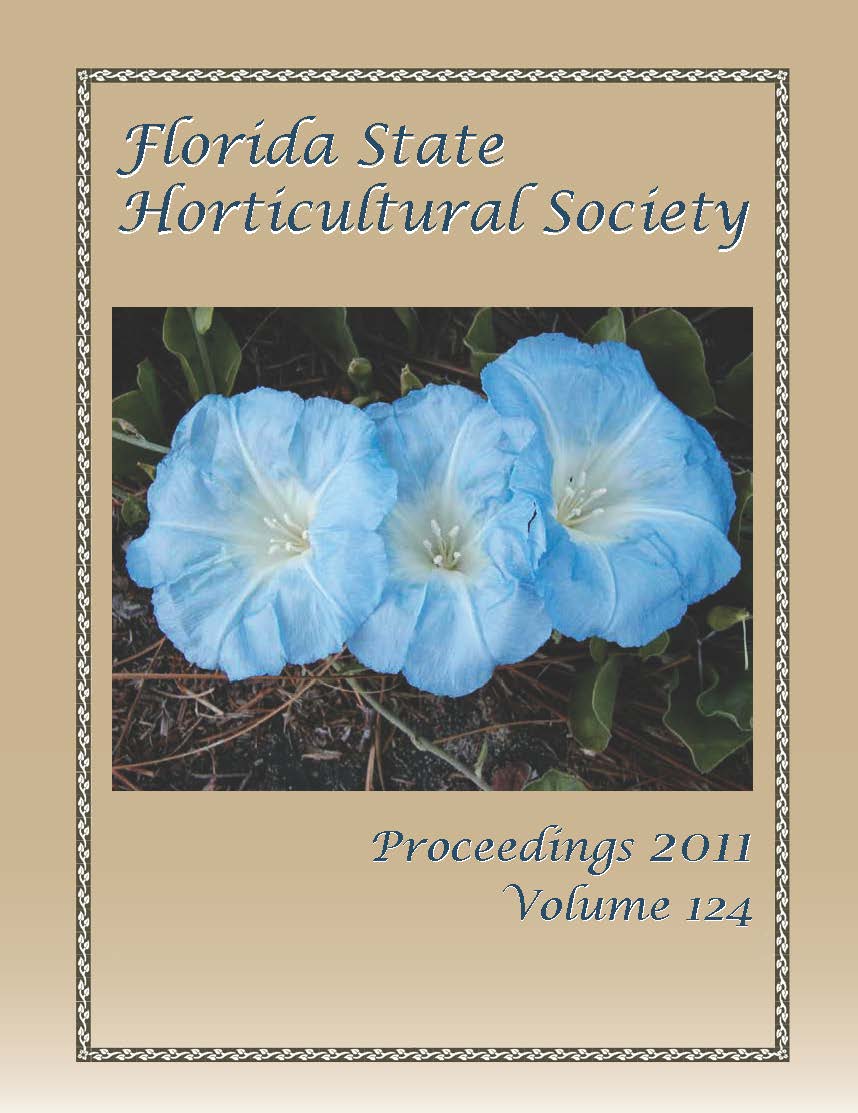Effectiveness of Selective Insecticides to Control Asian Citrus Psyllid and Citrus Leafminer during Leaf Flushing
Publicado 2011-12-01
Palabras clave
- chemical control,
- Citrus sinensis,
- citrus greening disease,
- Diaphorina citri,
- huanglongbing
- Phyllocnistis citrella ...Más
Resumen
The Asian citrus psyllid (ACP) Diaphorina citri and citrus leafminer (CLM) Phyllocnistis citrellaStainton are associated with the spread of “huanglongbing” (HLB), also known as citrus greening and citrus canker diseases, respectively. Both pests and diseases are present throughout the citrus growing region of Florida, necessitating integrated management strategies. Both pests require young citrus shoots for oviposition and development of immatures. Preemptive sprays of broad-spectrum insecticides against over-wintering ACP adults have been the most effective strategy to reduce populations through spring flush and beyond while taking a minimum toll on natural enemies. However, further suppression of both ACP and CLM, preferably without undue cost to beneficial fauna, is often necessary during the growing season. To this end, sprays of relatively selective insecticides were evaluated in 15-year-old Citrus sinensis (L.) Osbeck ‘Valencia’ orange trees infested with both pests. In general, treatment effects were stronger and longer lasting against ACP than CLM. In the first experiment conducted in May, 435 Oil (horticultural spray oil) alone, spirotetramat (Movento 240 SC), tolfenpyrad, abamectin + thiamethoxam (Agriflex), and diflubenzuron (Micromite 80 WGS) all applied with 435 Oil, flubendiamide (Belt 4SC) + Induce (non-ionic surfactant), M-Pede (soap) + Addit (vegetable oil), and fenpyroximate (Portal 0.4EC) all provided significant reduction of psyllid populations compared to the control for up to 17 days after treatment (DAT). Significant reduction in CLM populations compared to the control was observed with all treatments through 10 DAT except 435 Oil at 3 DAT, Portal and tolfenpyrad at 10 DAT, and M-Pede + Addit at both observations. In the second experiment, conducted in July–August, treatments of 435 Oil and Sivanto (10.26 oz/ac) applied alone, Sivanto (6.84, 10.26 or 13.69 oz/ac rate), spinetoram (Delegate 25 WG), Movento 240 SC all with 435 Oil, and imidacloprid (Provado 1.6 F) and Sivanto (10.26 oz/ac) with Induce all suppressed psyllid populations for more than 5 weeks. Both 435 Oil and Induce were effective adjuvants for Sivanto. Significantly fewer CLM larvae compared to the control were observed at 17 DAT with Delegate 25WG and three rates of Sivanto all applied with 435 Oil. Adult ACP were suppressed more compared to nymphs, in part because of new flush growth that provided protection to immatures against contact insecticides. Nevertheless, selective insecticides during the growing season can provide needed suppression of ACP and CLM populations with less collateral damage to beneficial insects and mites than would otherwise be suffered from broad-spectrum insecticides if used at that time.

